Finding yourself - and your roots - in the National Archives

One of the earliest photographs of Singapore, dating from 1876, shows a Chinese tomb and water. Courtesy of National Archives of Singapore
SINGAPORE: If you have ever been curious about your family history, consider taking a trip down to the National Archives, tucked away in the heart of the city just beside the Registry of Marriages.
There, you can sift through old marriage records, school records, and maybe even find a mention of a relative or two in the prisoners-of-war records.
Friendly archivists, such as Ms Fiona Tan, 30, will be more than happy to assist.
“I think two years ago, three years ago, there was a Masterchef Australia (participant) - Adam Liaw - he was down in Singapore for a filming for Destination Flavour,” said Ms Tan.
“He wanted to try to find out his family history because he had some ancestors who were based in Penang and Singapore. So the producers came to us and said that (they) found these things in the newspapers, is there anything more in the archives?
“Some had to do with prisoners of war records. Because we did acquire some of these overseas archives prisoners-of-war records, we were able to help identify his great-grandfather’s name in one of the name lists,” she added.
READ: Ivory, rifles and opium: NLB's rare collection reveals Singapore's 18th-century shopping list
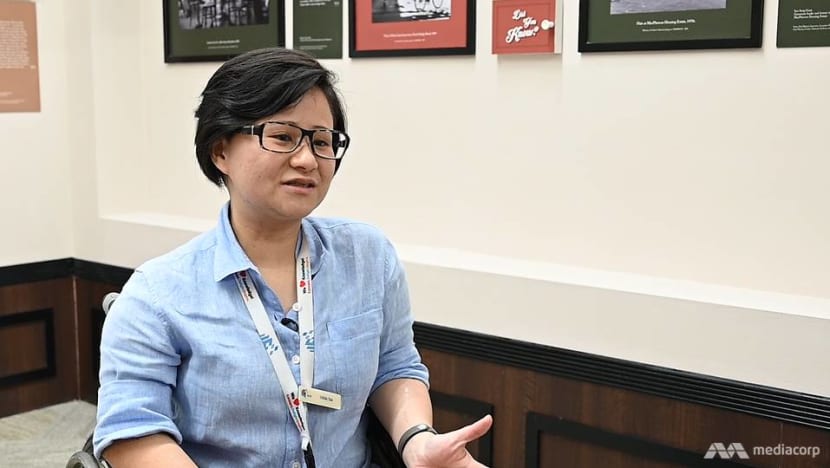
Wearing spectacles and a long-sleeved shirt rolled up to her elbows, Ms Tan looked every part the dedicated researcher.
“I’d like to say that the skill I do is to answer questions, which means questions that comes from members of the public,” said Ms Tan with a laugh.
And it is a task that she carries out with verve and passion. Taking CNA on a tour of the reference room, she explained what the room contains and the work of the archivists with a casual confidence.
Not only can visitors search existing records to trace their ancestry, they can also look at microfilms of old newspapers, find some of the oldest photographs of Singapore and even superimpose older maps on top of current ones with the Archives' computers.
"It's always very rewarding to be able to help people find the information that they need," said Ms Tan.
"Sometimes it involves going down this rabbit hole whereby we’re trying to find new leads, the leads may not exist, or the archival sources may not even be around, or it may not even have been created in the first place.
"But when we do manage to help people find what they require, then it's always very rewarding experience," she added.
FAMILY AND PERSONAL STORIES
According to Ms Tan, almost anything can be a source for family history research - even coroners’ records.
“There was one case in which this person came in and she had a newspaper article that stated that one of her ancestors had died ... by his own hand, I think that was what the newspaper article said,” said Ms Tan.
“She was very curious as to why this ancestor decided to take his own life. So we were like, maybe the coroners’ records would have it, and indeed it did.
“It included the kinds of interviews that they had with his family, his colleague - so his business was failing, and therefore he had depression.”
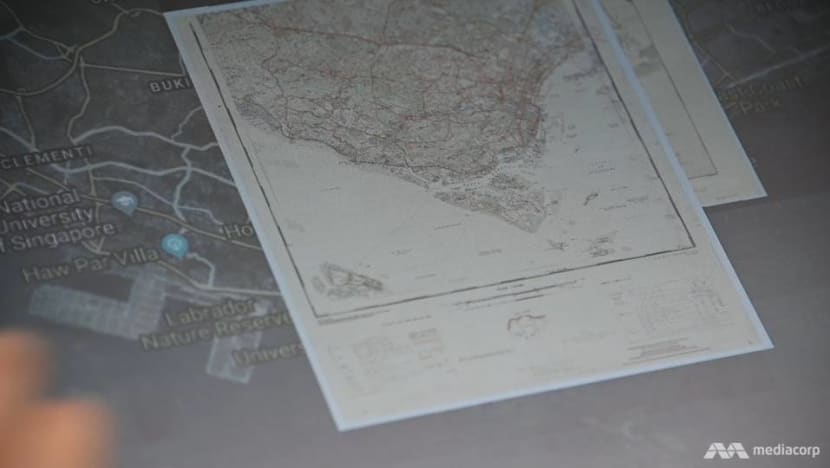
While coroners’ records are already well-known to academics and history students as a rich source of information, Ms Tan said she never expected these records to be useful to people looking for pieces of their family histories.
“Because it was an unnatural death (and) because he wasn’t a colonial employee, so we wouldn’t have any colonial accounts on him. He was just a business owner - and it wasn’t a very prominent business, so we were unlikely to have records.
“It was a bit of trial and error.”
WATCH: 4 Singaporeans search for answers about the past in the National Archives
But family history research is not the only reason why people might visit the archives. Sometimes, she said, they look for old school records to apply for courses or employment.
“There was once this gentleman who came in on Saturday morning,” said Ms Tan. “I was alone – with another colleague who happened to be away doing something else. So I was alone at the counter, and he came in to ask to look for his primary school records, but he didn’t remember what school he was studying at.”
Ms Tan spent at least one hour with him, asking questions just to triangulate the location of the school, including any landmarks that he would see walking to and from school every day.
“He started to say that ‘I will wake up at this time and then I will reach school at 6.20am. So it took me about 20 minutes to (walk) to school,’” she said.
“So okay, that’s helpful. So it’s within walkable distance, you’re not travelling by a bus or anything. We had to call up old street directories, try to identify – and then finally we managed to find that particular school location.”

It’s a process of detective work, she explained, and it often means that she will end up asking questions about even the colour of the user’s school uniform to piece together information about the particular school.
“COULDN’T DO ENOUGH TO HELP”
But do not be mistaken in thinking that each rabbit hole leads to a happy ending. Sometimes, the records can’t be found simply because there were no records kept at all, or certain parts of the records are missing.
“There are certain cases whereby we may not be able to help them, but we often do try our best,” said Ms Tan.
“I think there will always be those sorts of moments, whereby you feel that you couldn’t do enough to help a certain person to locate their information. But at the same time, it’s always useful to learn from the experience and then know what to look out for in the future.”
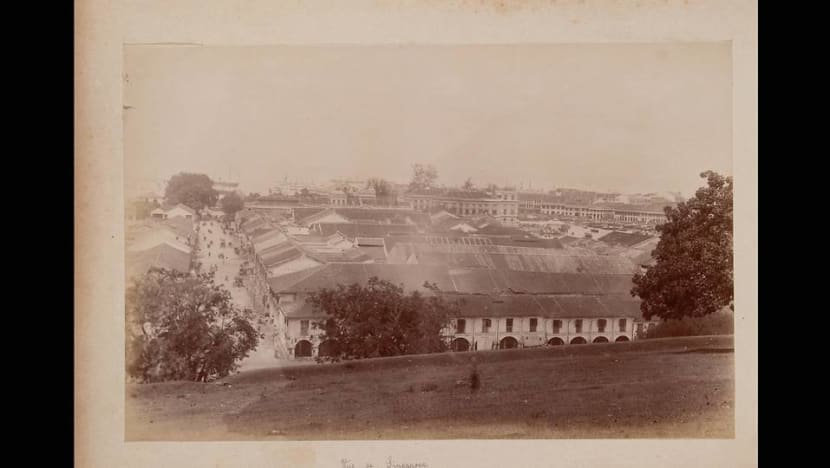
She added that searching for information in the archives is not Google: “It’s not a simple case of just typing in certain keywords or questions and you’ll be able to get the answers immediately. In certain cases, you will have to go to page and pages of records."
Although archivists may not be able to help everyone seeking information, sometimes their efforts are all that’s needed to make an impression.
“It’s surprising how sometimes they would still remember us for the effort of helping - they will still come back and thank us,” said Ms Tan.
She remembered one user who came in looking for schooling records for her night class, which the archives was unable to locate as the school did not keep track of students who studied part-time.
Even after approaching the Institute of Technical Education and the Ministry of Education, Ms Tan could still find no trace of her education history.
“But she did manage to appeal to get into that course of choice,” said Ms Tan. “And then, six months later, when she was done with her first major exam, she came back and she was like ‘Oh, I just happened to be in the area, and just wanted to pop by to thank you.’
“So I thought that was very heartwarming that even though we weren’t able to give her what she required, I think she appreciated the efforts we took to try to help her with it.”
CONSERVING SINGAPORE’S RECORDS
All historical documents have to be conserved for future use. Inside a lab on the third floor of the building, conservators were hard at work preserving records kept in NAS’s repository.
Conservator Ong Fang Zheng, 30, was cheerful and enthusiastic when she greeted CNA at the door to the lab. She spoke with machine-gun rapidity, explaining the various functions of the lab, from the rack of archival polyester used to protect old documents to the sleek white workbenches at the back.
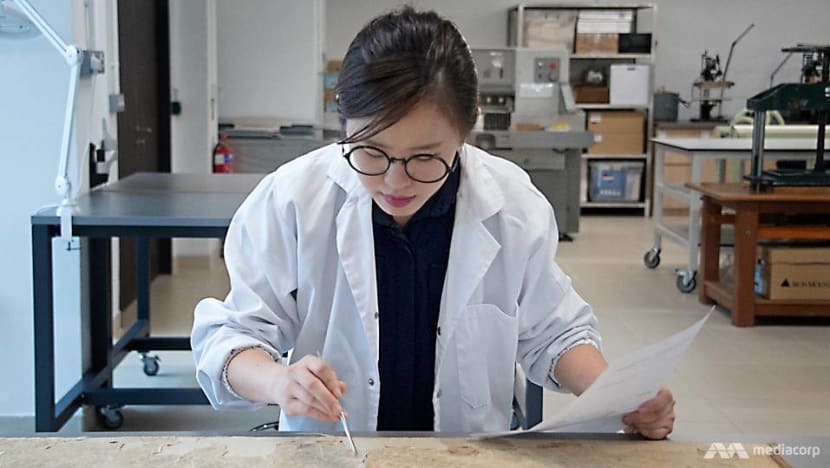
“You need to have good motor skills, good dexterity, that’s for sure,” she said. “A fine arts background would be helpful... A science background would be very helpful as well to understand the different kinds of… chemical reactions that we can have.
“And of course… having a real and keen interest in the arts and heritage. Because you can’t really do this work if you do not have love for it.”
Ms Ong’s task is to preserve paper-based records: maps, books, building plans, posters and even photographs, doing both repair work and preventive care.
Documentation is the first step when conserving historical items. Ms Ong will make note of the item's condition - what it is about and what needs repairing. Only after writing this down will she begin with surface cleaning, using a soft and delicate goat-hair brush to sweep away dirt.
To ensure that she is precise and careful with her work, Ms Ong also uses a microscope to get a closer view of the item - in this case, a map.
Any other repairs will be done based on the condition of the item.
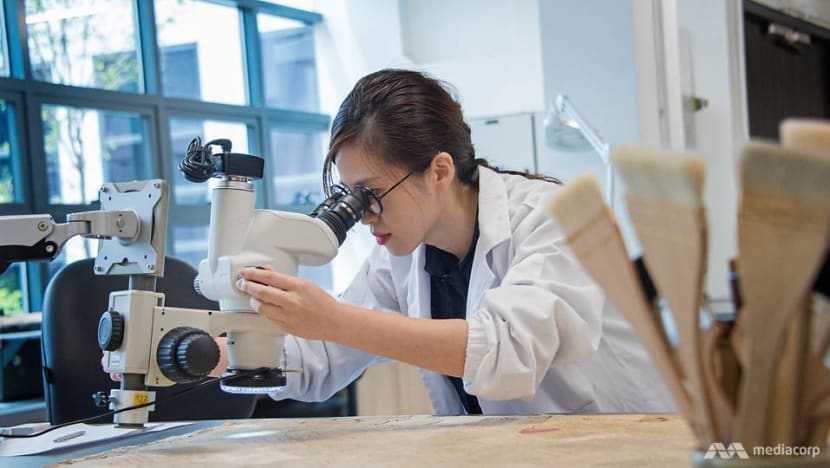
“Maps are a bit like prints. By prints we mean engraving, etching, wood cut. Ink is usually oil based, so you can wash it,” said Ms Ong. Other items, like newspapers and photographs, need to be treated with more care.
“So that’s when knowledge is important,” she said.
“WEIGHT OF THE RESPONSIBILITY”
But no matter how experienced you are, there is always a inherent worry when handling the item, said Ms Ong.
“The most difficult part of it is the weight of the responsibility,” she said. “Because I know that I’m working on something that is historical and cultural and it has lived on for centuries. And my job is to make sure it lasts for centuries more."
As much as it feels like an immense responsibility, the archives are very much deeply personal too.
“On the national level, the archives is the custodian of official records. But of course, on the individual level, the archives is also a place whereby people can come to try to find out their connection to other people,” said Ms Tan.
"They can come here to try to trace back their roots, they can come here to try to understand how life was different or how life was similar today."
Ms Ong added: “I remember this article I came across. It describes very aptly why we need to save our culture.
“Because without our culture and our history, we have no identity. Without our identity, then who are we?”















